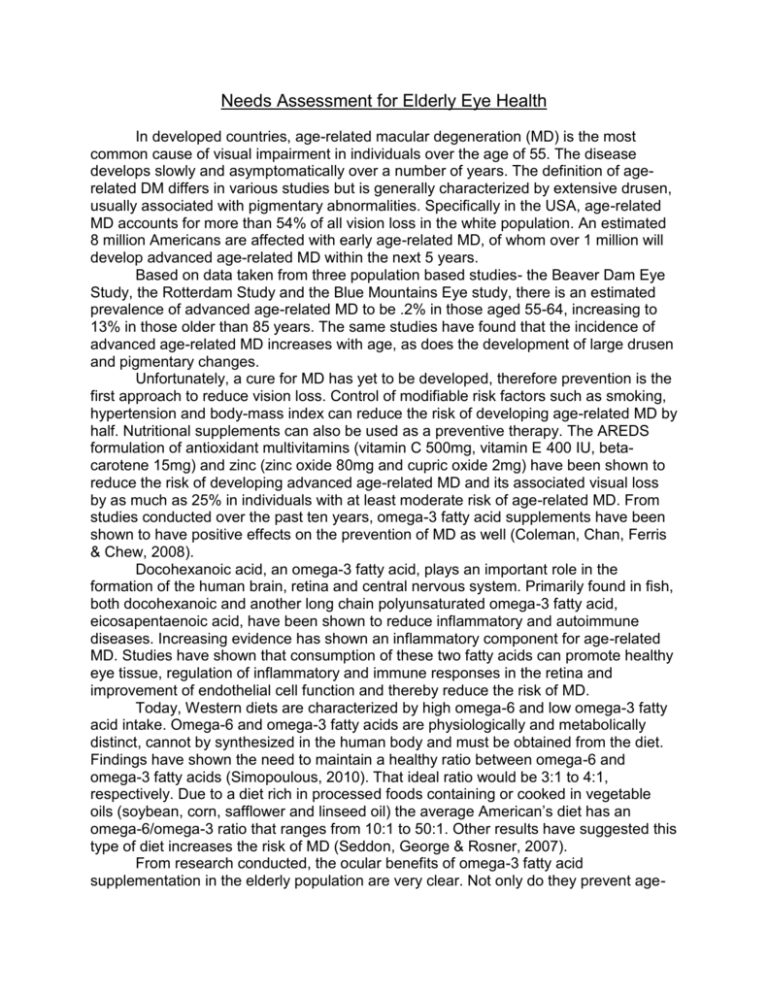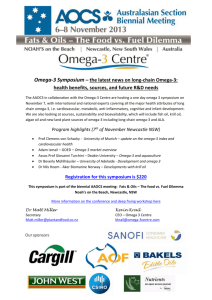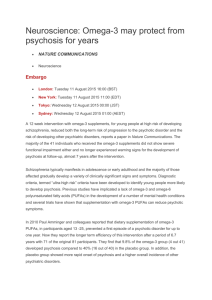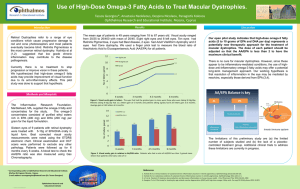here - Sarah Beth Steinmetz
advertisement

Needs Assessment for Elderly Eye Health In developed countries, age-related macular degeneration (MD) is the most common cause of visual impairment in individuals over the age of 55. The disease develops slowly and asymptomatically over a number of years. The definition of agerelated DM differs in various studies but is generally characterized by extensive drusen, usually associated with pigmentary abnormalities. Specifically in the USA, age-related MD accounts for more than 54% of all vision loss in the white population. An estimated 8 million Americans are affected with early age-related MD, of whom over 1 million will develop advanced age-related MD within the next 5 years. Based on data taken from three population based studies- the Beaver Dam Eye Study, the Rotterdam Study and the Blue Mountains Eye study, there is an estimated prevalence of advanced age-related MD to be .2% in those aged 55-64, increasing to 13% in those older than 85 years. The same studies have found that the incidence of advanced age-related MD increases with age, as does the development of large drusen and pigmentary changes. Unfortunately, a cure for MD has yet to be developed, therefore prevention is the first approach to reduce vision loss. Control of modifiable risk factors such as smoking, hypertension and body-mass index can reduce the risk of developing age-related MD by half. Nutritional supplements can also be used as a preventive therapy. The AREDS formulation of antioxidant multivitamins (vitamin C 500mg, vitamin E 400 IU, betacarotene 15mg) and zinc (zinc oxide 80mg and cupric oxide 2mg) have been shown to reduce the risk of developing advanced age-related MD and its associated visual loss by as much as 25% in individuals with at least moderate risk of age-related MD. From studies conducted over the past ten years, omega-3 fatty acid supplements have been shown to have positive effects on the prevention of MD as well (Coleman, Chan, Ferris & Chew, 2008). Docohexanoic acid, an omega-3 fatty acid, plays an important role in the formation of the human brain, retina and central nervous system. Primarily found in fish, both docohexanoic and another long chain polyunsaturated omega-3 fatty acid, eicosapentaenoic acid, have been shown to reduce inflammatory and autoimmune diseases. Increasing evidence has shown an inflammatory component for age-related MD. Studies have shown that consumption of these two fatty acids can promote healthy eye tissue, regulation of inflammatory and immune responses in the retina and improvement of endothelial cell function and thereby reduce the risk of MD. Today, Western diets are characterized by high omega-6 and low omega-3 fatty acid intake. Omega-6 and omega-3 fatty acids are physiologically and metabolically distinct, cannot by synthesized in the human body and must be obtained from the diet. Findings have shown the need to maintain a healthy ratio between omega-6 and omega-3 fatty acids (Simopoulous, 2010). That ideal ratio would be 3:1 to 4:1, respectively. Due to a diet rich in processed foods containing or cooked in vegetable oils (soybean, corn, safflower and linseed oil) the average American’s diet has an omega-6/omega-3 ratio that ranges from 10:1 to 50:1. Other results have suggested this type of diet increases the risk of MD (Seddon, George & Rosner, 2007). From research conducted, the ocular benefits of omega-3 fatty acid supplementation in the elderly population are very clear. Not only do they prevent age- related MD, but they support healthy tissue moisture and tear production, protect against age-related oxidative damage, maintain fluid and flexible eye cells and tissues and help alleviate dryness and redness by supporting healthy inflammatory levels. Overall EPA and DHA are among the most important nutrients for development, function and maintenance of eye tissued throughout life. DHA actually attains its highest concentration within eye tissue, where it accounts for approximately 30% of the total fatty acids. Because the research of the benefits of omega-3 fatty acid supplementation on the prevention of age-related MD and other components of ocular health is so new, the results are often not known among non-healthcare professionals. They’re still not known among some optometrists and ophthalmologists. According to Chet Steinmetz, OD, the majority of his patients know what age-related MD is but they don’t know the specifics of the disease. They also know the benefits of omega-3 fatty acid supplementation on cholesterol and cardiovascular health, however most don’t know the ocular benefits. This concept is something he has to explain all the time. While it is recommended to eat at least three servings of fish per week, this can be expensive and inconvenient for a large portion of the elderly population. The benefits of omega-3 fatty acid supplements for the elderly are that they can be found at any drug store and through most health care providers. Although the omega-3 fatty acids sold in drug stores are more inexpensive, many optometrists sell higher-end supplements because the higher end products have a higher concentration of omega-3 fatty acids and less chance of “fish burp” (a repulsive aftertaste/indigestion from the supplement). A month’s supply of this version of supplementation is around $50. The effects of omega-3 fatty acid supplementation are varied upon the dosage consumed. 500mg of EPA and GHA are needed to avoid deficiency, 1000mg (1mg) of EPA and DHA are needed for full benefits (proactive support) and 2-4g of EPA and DHA are needed for high-intensity support. Side effects of too much omega-3 fatty acids include easy bruising or bleeding; black, tarry stools; bright red blood in stool; vomiting of blood; severe headaches; stroke; hyperglycemia; and signs of allergic reaction, such as an unexplained rash, hives, itching, unexplained swelling, wheezing, and difficulty breathing or swallowing. It’s also important that the omega-3 fatty acid supplements have been adequately purified and tested for toxins. In conclusion, age-related MD is a prominent condition in mature adults and the elderly. Studies have found that omega-3 fatty acids help in the prevention and protection against age-related MD. However, with a diet deficient in omega-3 fatty acids and exceptionally high in omega-6 fatty acids, most Americans don’t consume enough omega-3 fatty acids to receive the ocular benefits from it. Therefore, it is encouraged that they take omega-3 fatty acid supplements. Because the research of omega-3 fatty acids on ocular health is so new, it’s important to raise awareness among health care professionals and their patients. It is also important to raise awareness of the prevalence of age-related MD. Therefore, our program is designed to educate the elderly population on the prevention of age-related MD and other ocular benefits (the second most prevalent being dry eye, according to Chet Steinmetz) by the supplementation of omega-3 fatty acids.








